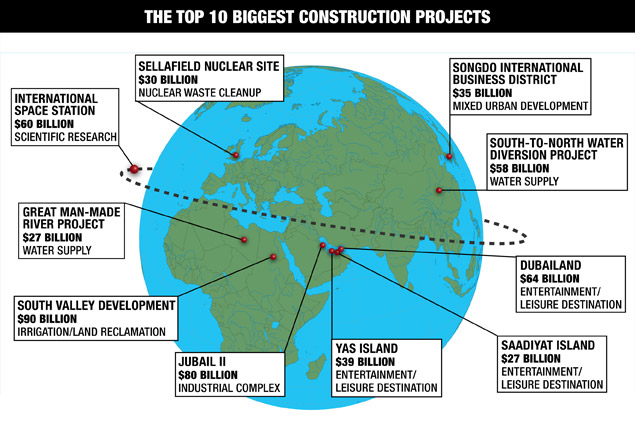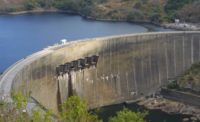North China is thirsty. It is home to half the country’s people but only 19% of its freshwater resources, and it is prone to drought. To alleviate water shortages there, the government is undertaking the largest water diversion project in history. Water from four of China’s largest rivers—the Yangtze, Yellow, Huai and Hai, all of which flow from west to east—will be carried north by three canals, each over 600 miles long.
The canals are referred to as the East Route, Middle Route and West Route. The East Route, which is largely done, diverts water from the lower reaches of the Yangtze, raising it vertically with 30 pumping stations and carrying it to Shandong Province and the city of Tianjin. Water quality on the East Route is of particular concern, and $3 billion is earmarked for 260 municipal wastewater treatment projects to prevent contamination.
The Middle Route will divert water from the Danjiangkou Reservoir and possibly the Three Gorges Reservoir to Beijing. In a project completed earlier this year, the Danjiangkou Dam was raised from its previous height of 157 meters to 170 m, which increased the reservoir’s capacity by 40%. The reservoir is now the largest man-made lake in Asia.
Making the reservoir water clean has been the focus of a sustained campaign by government officials. Over the past five years, they closed down 47 heavily polluting companies and carried out pollution-control measures at 30 more, spending $50 million in the process. To reduce agricultural runoff, municipalities offered money and technology to encourage farmers to develop pollution-free produce. In 2001, Danjiangkou City embarked on a program to re-forest more land within the watershed. The forest coverage rate around the reservoir has increased from 34% to 56%.
The project will have major impacts, both social and environmental. It will require the relocation of 300,000 people, many of whom were moved to allow the expansion of the Danjiangkou Reservoir. As for environmental impacts, some Chinese scientists have raised concerns. According to Du Yun, a geologist with the Institute of Geodesy and Geophysics at the China Academy of Sciences, the water from the Danjiangkou Reservoir siphoned off by the project will raise the risk of floods, increase sediment and worsen water quality, thereby hurting irrigation for local residents and limiting supplies for industrial and municipal use.
A key part of the Middle Route will be two 8.5-m-diameter tunnels, each 3.4 kilometers long, to carry water beneath the Yellow River at Mangshan, 40 miles from Zhengzhou, the capital of Henan Province. Work on the tunnels began in 2005. The first tunnel was completed last month, and the second is expected to be drilled through by September.
The Middle Route’s completion date was postponed from 2010 to 2014. Beijing’s 17.5 million residents need the water urgently. Their region is experiencing its ninth consecutive year of drought, and the city’s Miyun Reservoir is currently 2% lower than in the same period last year.
Costs for the first phases of the East Route and the Middle Route are projected to be $37.4 billion. This first phase will supply 13.4 billion cu m of water annually by 2014.
The West Route still is being planned. It will include two 200-m-plus-high dams, carrying water across the Qinghai-Tibet plateau— at more than 10,000 ft elevation—to feed China’s arid northwest. Engineering studies are under way, but no launch date for construction has been announced yet. The entire system is expected to supply 44 billion cu m of water annually when completed.
Location: China
Estimated Cost: $62 billion
Construction Period: 2002-2050
Developer: South-to-North Water Diversion Project Office of the State Council
Click below on each box to view more about the project





Post a comment to this article
Report Abusive Comment